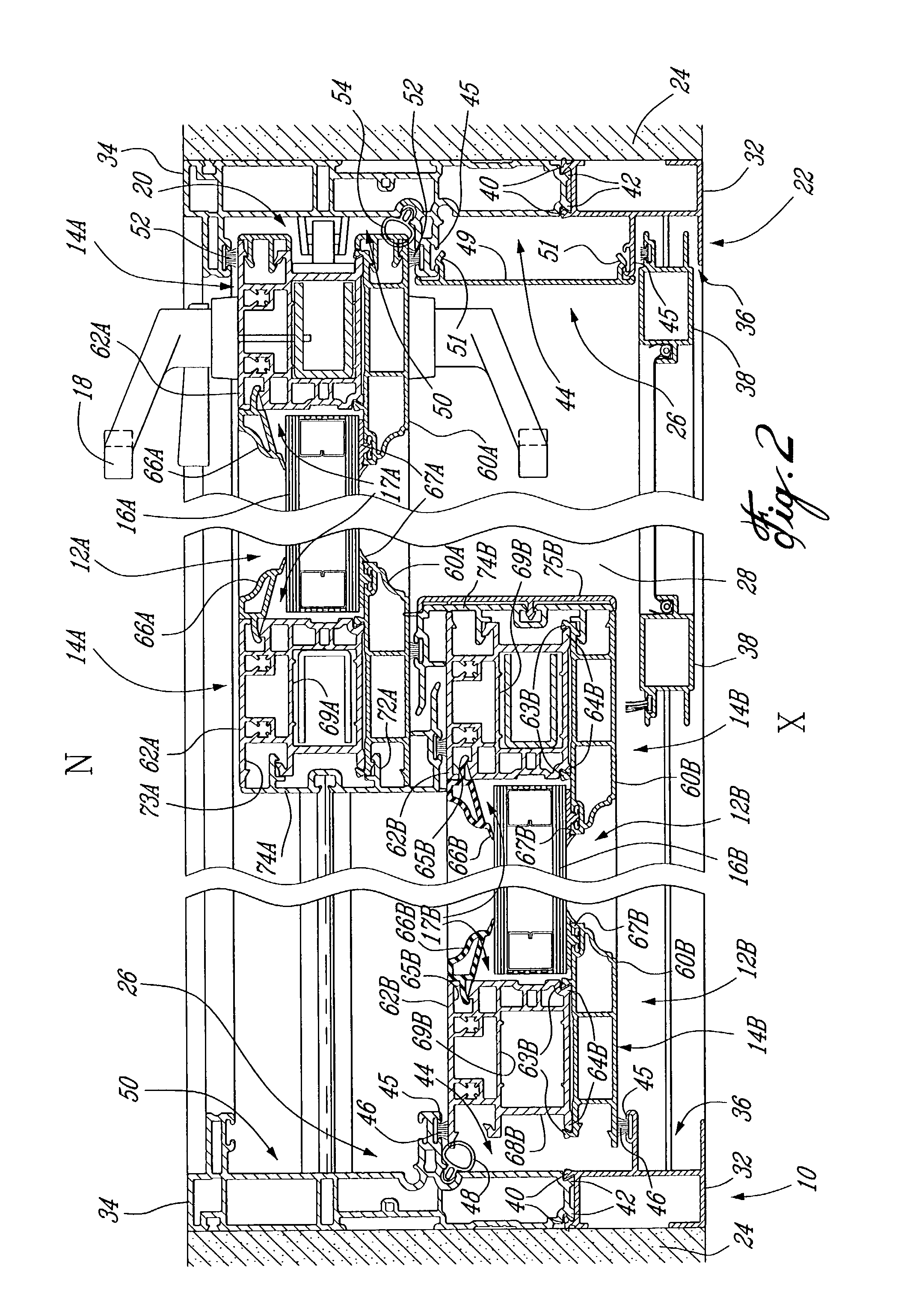Sliding door assembly
a technology of sliding doors and assemblies, applied in the direction of mechanical actuation of burglar alarms, insect protection, instruments, etc., can solve the problems of high thermal conductivity of aluminum, condensation or ice formation on the interior surface of the sash or on the glass panel, and high heat loss of the sash formed of aluminum sections
- Summary
- Abstract
- Description
- Claims
- Application Information
AI Technical Summary
Benefits of technology
Problems solved by technology
Method used
Image
Examples
Embodiment Construction
[0022]Referring to the drawings, and more particularly to FIG. 1, a sliding door assembly constructed in accordance with the present invention is generally shown at 10. The sliding door assembly 10 has a sliding door 12A, shown behind a screen stile 38, and a fixed door 12B. The sliding door 12A and the fixed door 12B generally comprise the same parts. For simplicity purposes, reference will be made to like elements of the sliding door 12A and the fixed door 12B without the letters “A” and “B” affixed thereto. However, the reference numerals on the drawings will have letters affixed thereto, namely “A” for parts of the sliding door 12A and “B” for parts of the fixed door 12B. The doors 12 typically consist of a sash 14 supporting a glass panel 16. The sliding door 12A has a handle 18 on an interior and an exterior side thereof, as best shown in FIG. 2. The handle 18 incorporates a locking system 20 that will lock the sliding door 12A to a frame 22 of the sliding door assembly 10.
[00...
PUM
 Login to View More
Login to View More Abstract
Description
Claims
Application Information
 Login to View More
Login to View More - R&D
- Intellectual Property
- Life Sciences
- Materials
- Tech Scout
- Unparalleled Data Quality
- Higher Quality Content
- 60% Fewer Hallucinations
Browse by: Latest US Patents, China's latest patents, Technical Efficacy Thesaurus, Application Domain, Technology Topic, Popular Technical Reports.
© 2025 PatSnap. All rights reserved.Legal|Privacy policy|Modern Slavery Act Transparency Statement|Sitemap|About US| Contact US: help@patsnap.com



